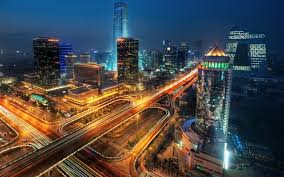Engineering rather than organic growth has driven the reordering of much of modern Chinese life, and it’s at the crux of Beijing’s ongoing radical transformation into a megacity of 130 million people. Complicating matters are the absence of property taxes and the restriction placed upon local municipalities from retaining any other type of fees they collect, so basic infrastructure and services have often been lacking or altogether absent during the capital city’s massive makeover.
From Ian Johnson’s very interesting NYT report:
The planned megalopolis, a metropolitan area that would be about six times the size of New York’s, is meant to revamp northern China’s economy and become a laboratory for modern urban growth.
“The supercity is the vanguard of economic reform,” said Liu Gang, a professor at Nankai University in Tianjin who advises local governments on regional development. “It reflects the senior leadership’s views on the need for integration, innovation and environmental protection.”
The new region will link the research facilities and creative culture of Beijing with the economic muscle of the port city of Tianjin and the hinterlands of Hebei Province, forcing areas that have never cooperated to work together. …
Jing-Jin-Ji, as the region is called (“Jing” for Beijing, “Jin” for Tianjin and “Ji,” the traditional name for Hebei Province), is meant to help the area catch up to China’s more prosperous economic belts: the Yangtze River Delta around Shanghai and Nanjing in central China, and the Pearl River Delta around Guangzhou and Shenzhen in southern China.
But the new supercity is intended to be different in scope and conception. It would be spread over 82,000 square miles, about the size of Kansas, and hold a population larger than a third of the United States. And unlike metro areas that have grown up organically, Jing-Jin-Ji would be a very deliberate creation.•
Tags: Ian Johnson, Liu Gang

